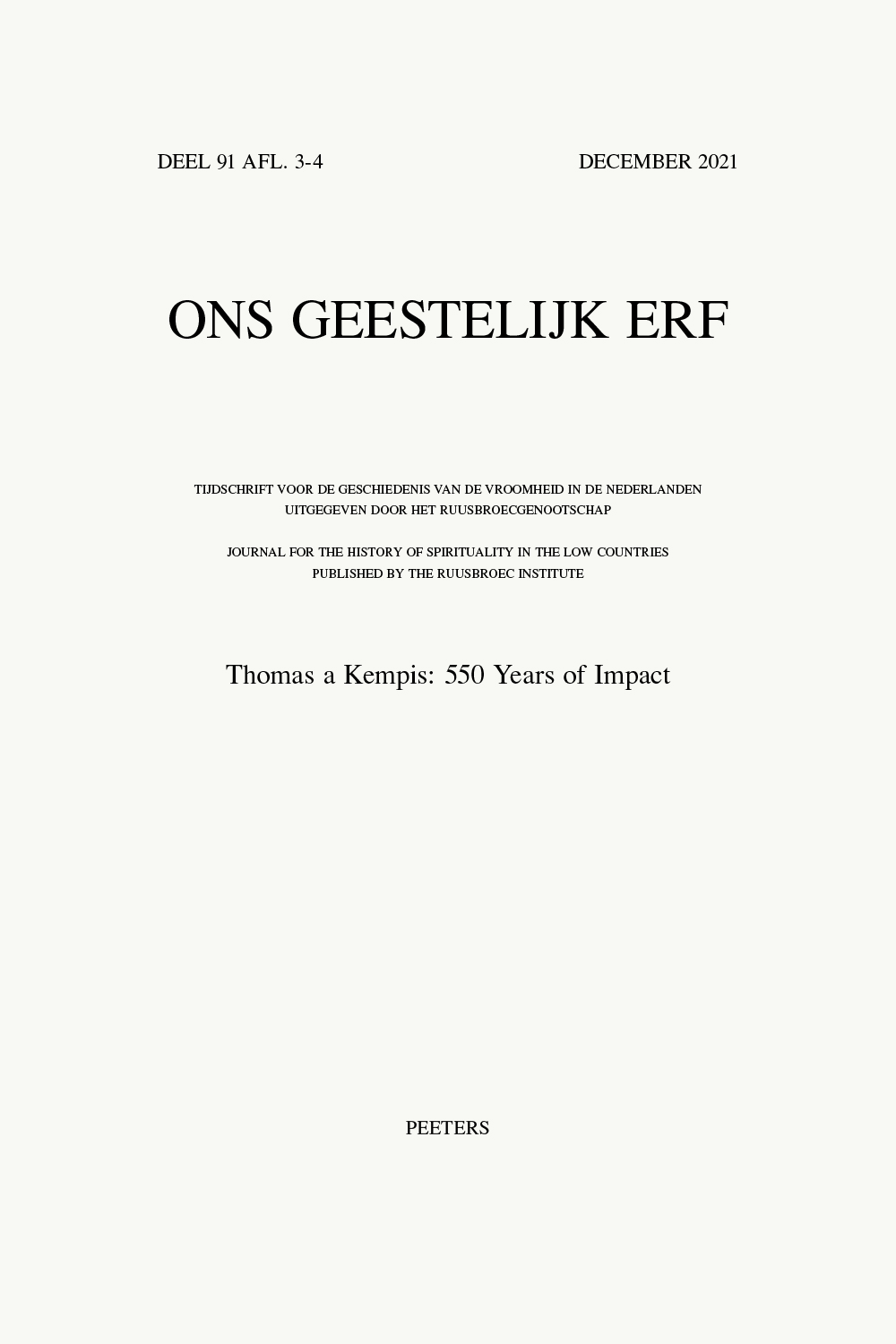 previous article in this issue previous article in this issue | next article in this issue  |

Preview first page |
Document Details : Title: De tweede religieuze vrouwenbeweging te Leiden Subtitle: Het convent van Sint-Margaretha of Roomburg Author(s): VAN LUIK, Madelon Journal: Ons Geestelijk Erf Volume: 74 Issue: 1-2 Date: maart-juni 2001 Pages: 50-67 DOI: 10.2143/OGE.74.1.616445 Abstract : The importance of the Third Order of St Francis in the medieval diocese of Utrecht can be illustrated by the fact that at least 166 convents existed in this diocese in the late middle ages. No less than 148 of these houses were female convents. Many Third Order convents have their origins in the first half of the fifteenth century. Therefore, they are part of the so-called second religious women’s movement, a term which points to the large number of women who chose to lead a (semi-)religious life in a convent or cloister. This article focuses on the second religious women’s movement in the city of Leiden, where between 1398 and 1450 twelve female religious communities were founded: six Third Order convents and six cloisters. Special attention is paid to the oldest Third Order convent in Leiden: that of St Margaret. This convent, which probably had its origins in a house of Sisters of the Common Life, was founded in 1398 by two devout women who lived in a house behind the parish church of Our Lady. The community soon took on the rule of the Third Order of St Francis. In 1404, the convent was moved to a location just outside the city walls, probably due to the growth of the number of sisters. In this period, the convent had special ties with leading people from the movement of the Modern Devotion. In 1464, the convent was moved again, to a location named ‘Rodenburg’ or ‘Roomburg’, situated in the district of Zoeterwoude and the parish of Leiderdorp. It is remarkable that this move has hardly been noticed in the historiography of Leiden. There were four motives behind the move. First, the location just outside the city walls was considered too moist, which led to illness in the community. Second, the location was considered dangerous in times of (the threat of) war, because the city magistrate might order that the convent be demolished or the convent might be used or destroyed by the enemy. Third, the convent probably wished to create some distance between itself and the city magistrate because of a conflict on the payment of taxes. This conflict was also apparent in other cities in the diocese of Utrecht and started when the city councils lifted the exemption on taxes, usually under the pretext that the members of the Third Order could not be considered religious in the full sense of the word and thus were not entitled to the ecclesiastical liberties. Fourth, the convent of St Margaret moved because of the growth of the number of sisters. In 1463, a year before the move, the convent counted one mother (‘mater’) and 163 sisters. This number illustrates the pull such a convent could have on women. It is yet unclear if the convent of St Margaret can be called representative of female convents of the Third Order of St Francis. So far, hardly any parallels have been found for either the large number of sisters or the move outside the city, to another district. |
|


